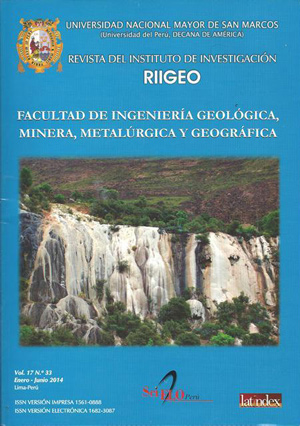Mechanical and sustaining properties of hydrabolt rock bolt plates
DOI:
https://doi.org/10.15381/iigeo.v17i33.11497Keywords:
Plates, rock bolts, compression, traction, rock holdingAbstract
To determine the mechanical and supporting properties of the plates for Hydrabolt rock bolts, compression and tensile tests have been performed. The tests were carried out in the Materials Laboratory of the Pontificia Universidad Católica del Perú (PUCP), from which it is concluded that the plates that undergo less compression deformation are the corner plates, which deform 14.01 mm for a maximum load of 41.56 KN, while the refined plates deform 25.10 mm for the maximum load of 40.56 KN. The plates that are most deformed by compression and traction are the refined plates. The corner ones are the least deformed, 28.91% to compression and 28.40% to central traction. Also, the plates that undergo greater deformation by the traction in the ears are the sharp plates. It is noteworthy that it is not convenient for the plates to be very rigid, since as the tension in the massif increases, it will not be noticeable until a violent rupture occurs, which can result in a collapse. On the contrary, in a ductile plate, the increase in tension will be noticeable, which will make it possible to take the preventive maintenance or reinforcement provisions of the tensioned area
Downloads
Published
Issue
Section
License
Copyright (c) 2014 Emiliano Giraldo

This work is licensed under a Creative Commons Attribution-NonCommercial-ShareAlike 4.0 International License.
AUTHORS RETAIN THEIR RIGHTS:
a. Authors retain their trade mark rights and patent, and also on any process or procedure described in the article.
b. Authors retain their right to share, copy, distribute, perform and publicly communicate their article (eg, to place their article in an institutional repository or publish it in a book), with an acknowledgment of its initial publication in the Rev. Inst. investig. Fac. minas metal cienc. geogr.
c. Authors retain theirs right to make a subsequent publication of their work, to use the article or any part thereof (eg a compilation of his papers, lecture notes, thesis, or a book), always indicating the source of publication (the originator of the work, journal, volume, number and date).






